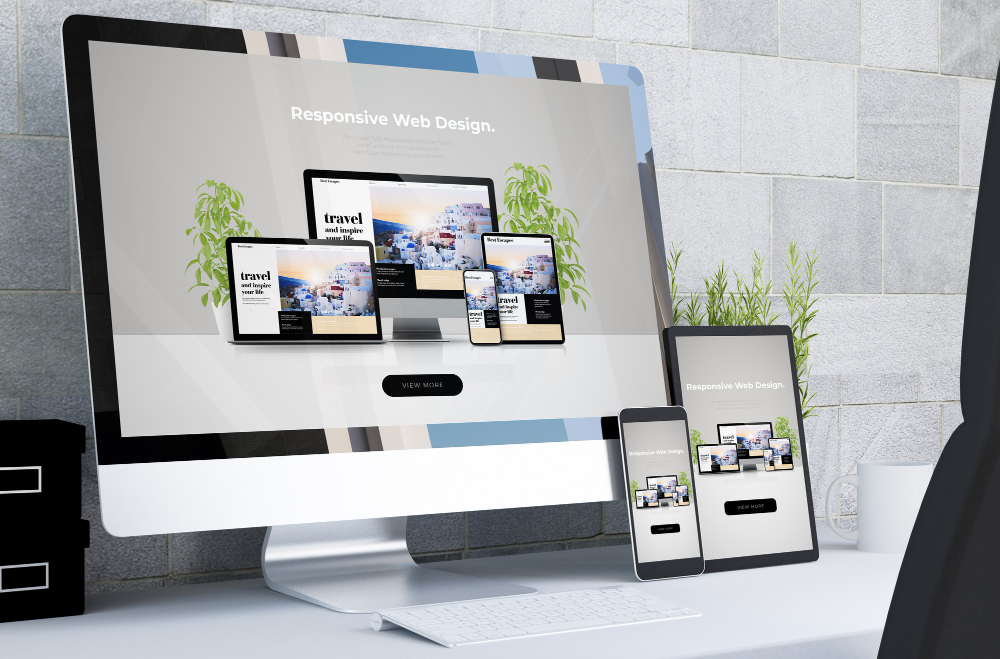Responsive Web Design Tips You Should Know

In today's digital age, having a responsive web design is essential. More users than ever are accessing the internet through various devices, from smartphones to tablets to desktops. Ensuring your website looks and functions optimally across all these platforms can significantly impact user experience and engagement.
What is Responsive Web Design?
Responsive web design is an approach that makes web pages render well on various devices and window or screen sizes. The goal is to provide an optimal viewing experience—easy reading and navigation with minimum resizing, panning, and scrolling. Here are some fundamental tips to ensure your web design is truly responsive.
1. Adopt a Mobile-First Approach
Why Start with Mobile?
Starting with a mobile-first approach ensures that your website performs well on smaller screens before scaling up to larger ones. Given that a significant portion of web traffic comes from mobile devices, it's vital to prioritize this format.
How to Implement a Mobile-First Strategy
- Simplify Navigation: Use a single-column layout and hamburger menus.
- Optimize Images: Ensure images load quickly and are not too large.
- Touch-Friendly Design: Buttons and links should be easily clickable with a finger.
2. Use Fluid Grids
What are Fluid Grids?
Fluid grids are a critical aspect of responsive design. They use percentages to define widths, rather than fixed units like pixels. This ensures that your layout adjusts smoothly to different screen sizes.
Implementing Fluid Grids
- CSS Frameworks: Utilize frameworks like Bootstrap or Foundation which come with built-in fluid grid systems.
- Percentage-Based Widths: Define element widths in percentages rather than fixed units.
3. Flexible Images
The Importance of Flexible Images
Images are a vital part of any website, but they can also be a challenge when it comes to responsiveness. Flexible images ensure that your visuals are adjusted to fit the screen size, maintaining both quality and layout integrity.
How to Make Images Flexible
- CSS Techniques: Use max-width property set to 100% for images.
- Responsive Image Attributes: Use HTML5 ‘srcset’ attribute to serve different image sizes based on the device.
4. Media Queries
What are Media Queries?
Media queries allow you to apply CSS rules based on device characteristics like screen width, height, resolution, and orientation. They are crucial for creating a responsive design that adapts to various screens.
Using Media Queries Effectively
- Breakpoints: Define breakpoints where your design will adjust. Common breakpoints include 320px, 768px, and 1024px.
- Conditional Styling: Apply different styles depending on the device characteristics. For example:
```css
@media (max-width: 600px) {
.container {
width: 100%;
}
}
```
5. Responsive Typography
Why Typography Matters
Text is a primary element of any website, and ensuring it's readable across all devices is crucial. Responsive typography adjusts the text size according to the screen size, providing a better reading experience.
Best Practices for Responsive Typography
- Relative Units: Use relative units like ems or rems for font sizes instead of pixels.
- Viewport-Scaled Typography: Implement CSS techniques like viewport width (vw) units to scale the text with the screen size.
6. Optimize for Performance
Importance of Performance
A responsive design isn’t just about fitting all screen sizes; it’s also about performance. Slow-loading websites can frustrate users and lead to higher bounce rates.
Performance Optimization Tips
- Minimize HTTP Requests: Reduce the number of elements on your page to minimize HTTP requests.
- Browser Caching: Use browser caching to store frequently used files on the user's device.
- Content Delivery Network (CDN): Utilize a CDN to deliver content from the server closest to the user’s location.
7. Test, Test, Test
The Necessity of Testing
Testing is an essential part of ensuring your website is truly responsive. Different devices have different screen resolutions, aspect ratios, and capabilities, so extensive testing is required.
Effective Testing Methods
- Responsive Design Tools: Use tools like Google’s Mobile-Friendly Test, BrowserStack, or Responsinator to see how your site performs on various devices.
- Manual Testing: Test your website manually on as many devices as possible.
8. Keep Up with Trends
Why Stay Updated?
The web design landscape is always evolving. New devices, browsers, and technologies come into play consistently. Staying updated with trends ensures that your website remains relevant and user-friendly.
How to Stay Updated
- Follow Industry Blogs: Websites like Smashing Magazine, A List Apart, and CSS-Tricks offer valuable insights.
- Join Communities: Engage with web design communities on platforms like Reddit, Stack Overflow, and LinkedIn.
- Attend Webinars and Conferences: Participate in design-focused webinars and conferences to learn about the latest trends and technologies.
Conclusion
Adopting these responsive web design tips will help ensure your website provides an excellent user experience across all devices. From starting with a mobile-first approach to implementing fluid grids, flexible images, and media queries, these strategies are crucial for modern web design.
If you need professional web design services, contact REK Marketing & Design today. Our team of experts is ready to help you create a responsive, user-friendly website that stands out.